Distributed assets, such as hybrid power system components, require reliable, timely, and secure coordinated data monitoring and control systems. Supervisory Control and Data Acquisition (SCADA) is a technology for the coordinated monitoring and control of such assets. However, SCADA system designs and implementations have largely been proprietary, mostly pricey and therefore economically unjustifiable for smaller applications. With proprietary SCADA systems, there is also the problem of interoperability with the existing components such as power electronic converters, energy storage systems, and communication systems since these components are usually from multiple vendors. Therefore, an open source SCADA system represents the most flexible and most cost-effective SCADA option for such assets. In this paper, we present the design and implementation of a low-cost, open source SCADA system based on the most recent SCADA architecture, the Internet of Things (IoT). The proposed SCADA system consists of current and voltage sensors for data collection, an ESP32 micro-controller with organic light-emitting diode (OLED) display, for receiving and processing the sensor data, and ThingsBoard IoT server for historic data storage and human machine interactions. For the sensor data transfer from the ESP32 to the ThingsBoard IoT server, Message Queuing Telemetry Transport (MQTT) protocol is implemented for data transfer over a local Wi-Fi connection with the MQTT Client configured on the ESP32, and the ThingsBoard server node serving as the MQTT Broker. The ThingsBoard IoT server is locally installed with PostgreSQL database on a Raspberry Pi single-board computer and hosted locally on MUN Network for data integrity and security. To test the performance of the developed open source SCADA system solution, it was setup to acquire and process the current, voltage and power of a standalone solar photovoltaic system for remote monitoring and supervisory control. The overall system design procedures and testing, as well as the created dashboards and alarms on the ThingsBoard IoT server platform are presented in the paper.
To Giuseppe Mingione, on the occasion of his 50th birthday, with admiration, gratitude and friendship.
1.
Introduction
We study the regularity of Lp-viscosity solutions to
where F:S(d)×Rd×R×Ω∖N→R, is a uniformly elliptic operator with bounded-measurable ingredients, and f∈Lp(Ω) for p>p0. Here, Ω⊂Rd is an open and bounded domain, N is a null set, S(d)∼Rd(d+1)2 is the space of symmetric matrices, and d/2<p0<d is the exponent such that the Aleksandrov-Bakelman-Pucci (ABP) estimate is available for elliptic equations with right-hand side in Lp, for p>p0.
Our contribution is two-fold. From a mathematical viewpoint, we extend the gradient potential estimates reported in [10] to operators with bounded-measurable coefficients depending explicitly on lower-order terms.
We argue by combining well-known facts in the theory of Lp-viscosity solutions, obtaining at once the corpus of results in [10]. That reasoning leads to the second layer of our contribution: the findings in the paper attest to the broad scope, and consequential character, of the developments reported in [10].
The regularity theory for viscosity solutions to (1.1) is a delicate matter. Indeed, the first result in this realm is the so-called Krylov-Safonov theory. It states that, if u∈C(B1) is a viscosity solution to
and F and G are (λ,Λ)-elliptic operators, then u∈Cαloc(B1), for some α∈(0,1) depending only on d, λ and Λ. In addition, one derives an estimate of the form
where C=C(d,λ,Λ) [25]. Indeed, the regularity result in the Krylov-Safonov theory concerns inequalities of the form
where the matrices A:=(aij)di,j=1 and B:=(bij)di,j=1 are uniformly elliptic, with the same ellipticity constants. The transition of those inequalities to (1.2) comes from the fundamental theorem of calculus. Indeed, notice that if F(0)=G(0)=0, we get
By computing the derivatives above with respect to the variable t and setting
one notices that a solution to (1.2) also satisfies (1.3).
If we replace the inequality in (1.2) with the equation
and require F to be a (λ,Λ)-elliptic operator, solutions become of class C1,α with estimates. Once again, α∈(0,1) depends only on the dimension and the ellipticity [4,43]. Finally, if we require F to be uniformly elliptic and convex (or concave) viscosity solutions to (1.4) are of class C2,α, with estimates. This is known as the Evans-Krylov theory, developed independently in the works of Lawrence C. Evans [21] and Nikolai Krylov [24].
The analysis of operators with variable coefficients, in the context of non-homogeneous problems first appeared in the work of Luis Caffarelli [3]. In that paper, the author considers the equation
and requires F(M,x) to be uniformly elliptic. The fundamental breakthrough launched in [3] concerns the connection of the variable coefficients operator with its fixed-coefficients counterpart. To be more precise, the author introduces an oscillation measure β(x,x0) defined as
Different smallness conditions on this quantity yield estimates in distinct spaces. It includes estimates in C1,α, W2,p and C2,α-spaces. Of course, further conditions on the source term f must hold. In particular, it is critical that f∈Lp(B1), for p>d.
An interesting aspect of this theory concerns the continuity hypotheses on the data of the problem. For instance, the regularity estimates do not depend on the continuity of f. Meanwhile, the notion of C-viscosity solution requires f to be defined everywhere in the domain, as it depends on pointwise inequalities [7,8,9]. Hence, asking f to be merely a measurable function in some Lebesgue space is not compatible with the theory. See the last paragraph before Theorem 1 in [3].
In [5], the authors propose an Lp-viscosity theory, recasting the notion of viscosity solutions in an almost-everywhere sense. In that paper, the authors examine (1.1) and suppose the ingredients of the problem are in Lp, for p>p0. The quantity d/2<p0<d appeared in the work of Eugene Fabes and Daniel Stroock [22]. It stems from the improved integrability of the Green function for (λ,Λ)-linear operators.
In [20], and before the formalization of Lp-viscosity solutions, the quantity p0 appeared in the context of Sobolev regularity. In that paper, Luis Escauriaza resorted to the improved integrability of the Green function from [22] to extend Caffarelli's W2,p-regularity theory to the range p0<p<d. For that reason, p0 is referred to in the literature as Escauriaza's exponent.
A fundamental study of the regularity theory for Lp-viscosity solutions to (1.1) appeared in [42]. Working merely under uniform ellipticity, the author proves regularity results for the gradient of the solutions. In case p>d, solutions are of class C1,α. Here, the smoothness degree depends on the Krylov-Safonov exponent, and on the ratio d/p. However, in case p0<p≤d, solutions are only in W1,q, where q→∞ as p→d.
The findings in [42] highlight an important aspect of the theory, namely: the smoothness of Du, in the range p0<p<d, is a very delicate matter. It is known that C1,α-regularity is not available in this context.
A program that successfully accessed this class of information is the one in [10]. Through a modification in the linear Riesz potential, tailored to accommodate the p-integrability of the data, the authors produce potential estimates for the Lp-viscosity solutions to (1.5). Ultimately, those estimates yield a modulus of continuity for the gradient of the solutions.
In addition to uniform ellipticity, the results in [10] require an average control on the oscillation of F(M,x). It also assumes f∈Lp(Ω) for p0<p<d. Under these conditions, the authors prove a series of potential estimates. Those lead to local boundedness and (an explicit modulus of) continuity for Du. Also, a borderline condition in Lorentz spaces follows: if f∈Ld,1(Ω), then Du is continuous. Besides providing new, fundamental developments to the regularity theory of fully nonlinear elliptic equations, the arguments in [10] are pioneering in taking to the non-variational setting a class of methods available before only for problems in the divergence form.
We extend the findings in [10] to the case of (1.1) in the presence of bounded-measurable ingredients. Our analysis heavily relies on properties of Lp-viscosity solutions [5,42]; see also [45].
Our first main result concerns the Lipschitz-continuity of Lp-viscosity solutions to (1.1) and reads as follows.
Theorem 1 (Lipschitz continuity). Let u∈C(Ω) be an Lp-viscosity solution to (1.1). Suppose Assumptions A1 and A1 are in force. Then, for every q>d, there exists a constant θ∗=θ∗(d,λ,Λ,p,q) such that if Assumption A3 holds with θ≡θ∗, one has
for every x∈Ω and r>0 with Br(x)⊂Ω, for some universal constant C>0.
We recall that a constant is called universal whenever it depends solely on the dimension and the ellipticity constants. The potential estimate in Theorem 1 builds upon Święch's W1,q-estimates to produce uniform estimates in B1/2. In fact, by taking d<q<p∗ in Theorem 1, with
one finds C=C(d,λ,Λ,p) such that
Our second main result establishes gradient-continuity for the Lp-solutions to (1.1) and provides an explicit modulus of continuity for the gradient. It reads as follows.
Theorem 2 (Gradient continuity). Let u∈C(Ω) be an Lp-viscosity solution to (1.1). Suppose Assumptions A1 and A1 are in force. Suppose further that Ifp(x,r)→0 as r→0, uniformly in x. There exists 0<θ∗≪1 such that, if Assumption A3 holds for θ≡θ∗, then Du is continuous. In addition, for Ω′⋐Ω″⋐Ω, and any δ∈(0,1], one has
for every x,y∈Ω′, where C=C(d,p,λ,Λ,ω,Ω′,Ω″) and α=α(d,p,λ,Λ).
The strategy to prove Theorems 1 and 2 combines fundamental facts in Lp-viscosity theory to show that a solution to (1.1) also solves an equation of the form
where ˜F and ˜f meet the conditions required in [10]. In particular, the Lorentz borderline condition for gradient-continuity follows as a corollary.
Corollary 1 (Borderline gradient-regularity). Let u∈C(Ω) be an Lp-viscosity solution to (1.1). Suppose Assumptions A1 and A1 are in force. Suppose further f∈Ld,1(Ω). There exists 0<θ∗≪1 such that, if Assumption A3 holds for θ≡θ∗, then Du is continuous.
We organize the remainder of this paper as follows. Section 2 presents some context on potential estimates, briefly describing their motivation and mentioning recent breakthroughs. We detail our main assumptions in Section 3.1, whereas Section 3.2 gathers preliminary material. The proofs of Theorems 1 and 2 are the subject of Section 4.
2.
Potential estimates: from the Poisson equation to fully nonlinear problems
Potential estimates are natural in the context of linear equations for which a representation formula is available. For instance, let μ∈L1(Rd) be a measure and consider the Poisson equation
It is well-known that u can be represented through the convolution of μ with the appropriate Green function. In case d>2, we have
where C>0 depends only on the dimension.
Now, recall the β-Riesz potential of a Borel measure μ∈L1(Rd) is given by
Hence, the representation formula (2.2) allows us to write u(x) as the 2-Riesz potential of μ. Immediately one infers that
obtaining a potential estimate for u. By differentiating (2.2) with respect to an arbitrary direction e∈Sd−1, one concludes
That is, the representation formula available for the solutions to the Poisson equation yields potential estimates for the solutions.
This reasoning collapses if (2.1) is replaced with a nonlinear equation lacking representation formulas. Then a fundamental question arises: it concerns the availability of potential estimates for (nonlinear and inhomogeneous) problems for which representation formulas are not available.
The first answer to that question appears in the works of Tero Kilpeläinen and Jan Malý [23], and Neil Trudinger and Xu-Jia Wang [44], where the authors produce potential estimates for the solutions of p-Poisson type equations. Taking this approach a notch up, and accounting for potential estimates for the gradient of solutions, one finds the contributions of Giuseppe Mingione [38,39,40,41], Frank Duzaar and Giuseppe Mingione [16,17,18,19], and Tuomo Kuusi and Giuseppe Mingione [26,27,28,29,30,31,32,33,34,35,36,37]. Of particular interest to the present article is the analysis of potential estimates in the fully nonlinear setting, due to Panagiota Daskalopoulos, Tuomo Kuusi, and Giuseppe Mingione [10]. More recent contributions appeared in the works of Cristiana De Filippis [11] and Cristiana De Filippis and Giuseppe Mingione [12,13]. See also the works of Cristiana De Filippis and collaborators [14,15].
In [19] the authors examine an equation of the form
where Ω⊂Rd is a Lipschitz domain, and μ∈L1(Ω) is a Radon measure with finite mass. Here, a:Ω×Rd→Rd satisfies natural conditions, regarding growth, ellipticity, and continuity. Those conditions involve an inhomogeneous exponent p≥2, concerning the behaviour of a=a(x,z) on z. An oversimplification yields
for p>2, turning (2.3) into the degenerate p-Poisson equation. In that paper, the authors resort to the Wolff potential Wμβ,p, defined as
for β∈(0,d/p]. Their main result is a pointwise estimate for the gradient of the solutions to (2.3). It reads as
whenever BR(x)⊂Ω, and R>0 is bounded from above by some universal quantity depending also on the data of the problem; see [19,Theorem 1]. A remarkable consequence of this estimate is a Lipschitz-continuity criterium for u obtained solely in terms of the Wolff potential of μ. Indeed, if Wμ1p,p(⋅,R) is essentially bounded for some R>0, every W1,p0-weak solution to (2.3) would be locally Lipschitz continuous. We notice the nonlinear character of the Wolff potential suits the growth conditions the authors impose on a(x,z), as it scales accordingly under Lipschitz geometries.
The findings in [19] also respect a class of very weak solutions, known as solutions obtained by limit of approximations (SOLA); see [1,2]. This class of solutions is interesting because, among other things, it allows us to consider functions in larger Sobolev spaces. Indeed, for 2−1/d<p<d one can prove the existence of a SOLA u∈W1,10(Ω) to
satisfying u=0 on ∂Ω. In addition, u∈W1,q0(Ω) with estimates, provided q>1 such that
When it comes to the proof of (2.4), the arguments in [19] are very involved. However, one notices a fundamental ingredient. Namely, a decay rate for the excess of the gradient with respect to its average. Indeed, the authors prove there exist β∈(0,1] and C≥1 such that
for every 0<r<R with BR(x)⊂Ω. Here,
See [19,Theorem 3.1]. An important step in the proof of (2.5) is a measure alternative, depending on the fraction of the ball Br in which the gradient is larger than, or smaller than, some radius-dependent quantity.
Although the Wolff potential captures the inhomogeneous and nonlinear aspects of a=a(x,z), a natural question concerns the use of linear potentials in the analysis of (2.3).
Indeed, in [39] the author supposes a(x,z) to satisfy
for every x,y∈Ω, z∈Rd, and ξ∈Rd, for some C,λ>0, and α∈(0,1]. Under these natural conditions, he derives a gradient bound in terms of the (linear) localized Riesz potential Iσβ(x,R), defined as
for a measure σ∈L1(Ω), and β∈(0,1], whenever BR(x)⊂Ω.
Indeed, the main contribution in [39] is the following: under (2.6), solutions to (2.3) satisfy
where C>0 depends on the data in (2.6). In case a=a(z) does not depend on the spatial variable, K≡0 and (2.7) recovers the usual potential estimate, such as the one in (2.4).
A further consequence of potential estimates is in unveiling the borderline conditions for C1-regularity of the solutions to (2.3). See [17]; see also [6] for related results. More precisely, the intrinsic connection between Lorentz spaces and the nonlinear Wolff potentials unlocks the minimal conditions on the right-hand side μ that ensures continuity of Du.
In [17], the authors impose p-growth, ellipticity, and continuity conditions on a=a(x,z), and derive minimal requirements on μ to ensure that u∈C1(Ω) [17,Theorem 3]; see also [17,Theorem 9] for the vectorial counterpart of this fact.
They prove that if μ∈Ld,1p−1loc(Ω), then Du is continuous in Ω. To get this fact, one first derives an estimate for the Wolff potential Wμ1p,p(x,R) in terms of the (d,1/(p−1))-Lorentz norm of μ. It follows from averages of decreasing rearrangements of μ. See [17,Lemma 2]. Then one notices that such control implies
uniformly in x∈Ω, as R→0; see [17,Lemma 3].
The previous (very brief) panorama of the literature suggests that whenever a=a(x,z) satisfies natural conditions – concerning p-growth, ellipticity, and continuity – potential estimates are available for the solutions to (2.3). Those follow through Wolff and (linear) Riesz potentials. Furthermore, this approach comes with a borderline criterion on μ for the differentiability of solutions. However, these developments appear in the variational setting, closely related to the notion of weak distributional solutions.
Potential estimates in the non-variational case are the subject of [10]. In that paper, the authors examine fully nonlinear elliptic equations
where F is uniformly elliptic and f∈Lp(B1). In this context, the appropriate notion of solution is the one of Lp-viscosity solution [5]. Technical aspects of the theory – including its very definition – rule out the case where f∈L1(Ω), regardless of the dimension d≥2. Instead, the authors work in the range p0<p<d, where d/2<p0<d is the exponent associated with the Green's function estimates appearing in [22].
The consequences of potential estimates for fully nonlinear equations are remarkable. In fact, if f∈Lp(Ω) with p>d, solutions to (2.8) are known to be of class C1,α, with α∈(0,1) satisfying
where α0∈(0,1) is the exponent in the Krylov-Safonov theory available for F=0; see [42]. It is also known that C1,α-regularity is no longer available for (2.8) in case p<d. The fundamental question arising in this scenario concerns the regularity of Du in the Escauriaza range p0<p<d.
In [42], the author imposes an oscillation control on F(M,⋅) with respect to its fixed-coefficients counterpart and proves regularity estimates for the solutions in W1,q(Ω), for p0<p<d, for every
with d∗:=+∞. Meanwhile, the existence of a gradient in the classical sense, or any further information on its degree of smoothness, was not available in the p<d setting.
In [10] the authors consider Lp-viscosity solutions to (2.8), with f∈Lp(Ω), for p0<p<d. In this context, they prove the local boundedness of Du in terms of a p-variant of the (linear) Riesz potential. In addition, the authors derive continuity of the gradient, with an explicit modulus of continuity. Finally, they obtain a borderline condition on f, once again involving Lorentz spaces. In fact, if f∈Ld,1(Ω), then u∈C1(Ω).
The reasoning in [10] involves the excess of the gradient vis-a-vis its average and a decay rate for this quantity. However, in the context of viscosity solutions, energy estimates are not available as a starting point for the argument. Instead, the authors cleverly resort to Święch's W1,q-estimates and prove a decay of the excess at an initial scale. An involved iteration scheme builds upon the natural scaling of the operator and unlocks the main building blocks of the argument.
3.
Technical preliminaries and main assumptions
This section details our assumptions and gathers basic notions and facts used throughout the paper. We start by putting forward the former.
3.1. Main assumptions
For completeness, we proceed by defining the extremal Pucci operators P±λ,Λ:S(d)→R.
Definition 1 (Pucci extremal operators). Let 0<λ≤Λ. For M∈S(d) denote with λ1,…,λd its eigenvalues. We define the Pucci extremal operator P+λ,Λ:S(d)→R as
Similarly, we define the Pucci extremal operator P−:S(d)→R as
A 1 (Structural condition). Let ω:[0,+∞)→[0,+∞) be a modulus of continuity, and fix γ>0. We suppose the operator F satisfies
for every (M,p,r) and (N,q,s) in S(d)×Rd×R, and every x∈Ω∖N. Also, F=F(M,p,r,x) is non-decreasing in r and F(0,0,0,x)=0.
Our next assumption sets the integrability of the right-hand side f.
A 2 (Integrability of the right-hand side). We suppose f∈Lp(B1), for p>p0, where d/2<p0<d is the exponent such that the ABP maximum principle holds for solutions to uniformly elliptic equations F=f provided f∈Lp, with p<p0.
We continue with an assumption on the oscillation of F on x. To that end, consider
We proceed with a smallness condition on β(⋅,y), uniformly in y∈B1.
A 3 (Oscillation control). For every y∈Ω, we have
where 0<θ≪1 is a small parameter we choose further in the paper.
We close this section with a remark on the modulus of continuity ω appearing in Assumption A1. For any v∈C(B1)∩L∞(B1) we notice that ω(|v(x)|)≤C for some C>0, perhaps depending on the L∞-norm of v. Hence
This information will be useful when estimating certain quantities in Lp-spaces appearing further in the paper.
3.2. Preliminaries
In the sequel, we introduce the basics of Lp-viscosity solutions, mainly focusing on the properties we use in our arguments. We start with the definition of Lp-viscosity solutions for (1.1).
Definition 2 (Lp-viscosity solution). Let F=F(M,p,r,x) be nondecreasing in r and f∈Lp(B1) for p>d/2. We say that u∈C(Ω) is an Lp-viscosity subsolution to F=f if for every ϕ∈W2,ploc(Ω), ε>0 and open subset U⊂Ω such that
almost everywhere in U, then u−ϕ cannot have a local maximum in U. We say that u∈C(Ω) is an Lp-viscosity supersolution to F=f if for every ϕ∈W2,ploc(Ω), ε>0 and open subset U⊂Ω such that
almost everywhere in U, then u−ϕ cannot have a local minimum in U. We say that u∈C(Ω) is an Lp-viscosity solution to F=f if it is both an Lp-sub and an Lp-supersolution to F=f.
Although the definition of Lp-viscosity solutions requires p>d/2, the appropriate range for the integrability of the data is indeed p>p0>d/2, as most results in the theory are available only in this setting. See, for instance, [5]. For further reference, we recall a result on the twice-differentiability of Lp-viscosity solutions.
Lemma 1 (Twice-differentiability). Let u∈C(Ω) be an Lp-viscosity solution to (1.1). Suppose Assumptions A1 and A1 are in force. Then u is twice differentiable almost everywhere in Ω. Moreover, its pointwise derivatives satisfy the equation almost everywhere in Ω.
For the proof of Lemma 1, see [5,Theorem 3.6]. In what follows, we present a lemma relating Lp-viscosity solutions to F=f with equations governed by the extremal Pucci operators.
Lemma 2. Suppose Assumption A1 is in force and f∈Lp(Ω), with p>p0. Suppose further that u∈C(Ω) is twice differentiable almost everywhere in Ω. Then u is an Lp-viscosity subsolution [resp. supersolution] of (1.1) if and only if
i. we have
almost everywhere in Ω, and ii. whenever ϕ∈W2,ploc(Ω) and u−ϕ has a local maximum [resp. minimum] at x^* $, then
For the proof of Lemma 2, we refer the reader to [42,Lemma 1.5]. We are interested in a consequence of Lemma 2 that allows us to relate the solutions of F(D2u,Du,u,x)=f with the equation F(D2u,0,0,x)=˜f, for some ˜f∈Lp(Ω). This is the content of the next corollary.
Corollary 2. Let u∈C(Ω) be an Lp-viscosity solution to (1.1). Suppose A1 and A1 hold. Define ˜f:Ω→R as
If ˜f∈Lp(Ω), then u is an Lp-viscosity solution of
Proof. We only prove that u is an Lp-viscosity subsolution to (3.1), as the case of supersolutions is analogous. Notice the proof amounts to verify the conditions in items i. and ii. of Lemma 2.
Because u solves (1.1) in the Lp-viscosity sense, Lemma 1 implies it is twice differentiable almost everywhere in Ω. Hence, the definition of ˜f ensures
almost everywhere in Ω, which verifies item i. in Lemma 2.
To address item ii., we resort to Lemma 2 in the opposite direction. Let ϕ∈W2,ploc(Ω) and suppose x∗∈Ω is a point of maximum for u−ϕ. Since u is an Lp-viscosity solution to (1.1), that lemma ensures that
Therefore, item ii. also follows and the proof is complete.
We also use the truncated Riesz potential of f. In fact, we consider its Lp-variant, introduced in [10]. To be precise, given f∈Lp(Ω), we define its (truncated) Riesz potential Ifp(x,r) as
In case p=1 we recover the usual truncated Riesz potential.
We proceed by stating Theorems 1.2 and 1.3 in [10].
Proposition 1 (Daskalopoulos-Kuusi-Mingione I). Let u∈C(Ω) be an Lp-viscosity solution to
Suppose Assumptions A1 and A1 are in force. Then there exists θ1 such that, if Assumption A3 holds for θ≡θ1, one has
for every x∈Ω and r>0 with Br(x)⊂Ω, for some universal constant C>0.
Proposition 2 (Daskalopoulos-Kuusi-Mingione II). Let u∈C(Ω) be an Lp-viscosity solution to
Suppose Assumptions A1 and A1 are in force. Suppose further that Ifp(x,r)→0 as r→0, uniformly in x. Then there exists θ2 such that, if Assumption A3 holds for θ≡θ2, Du is continuous. In addition, for Ω′⋐Ω″⋐Ω, and any δ∈(0,1], one has
for every x,y∈Ω′, where C=C(d,p,λ,Λ,γ,ω,Ω′,Ω″) and α=α(d,p,λ,Λ).
For the proofs of Propositions 1 and 2, we refer the reader to [10,Theorem 1.3]. We close this section by including Święch's W1,p-regularity result.
Proposition 3 (W1,q-regularity estimates). Let u∈C(Ω) be an Lp-viscosity solution to (1.1). Suppose Assumptions A1 and A1 are in force. There exists 0<¯θ≪1 such that, if Assumption A3 holds with θ≡¯θ, then u∈W1,qloc(Ω) for every 1<q<p∗, where
Also, for Ω′⋐Ω, there exists C=C(d,λ,Λ,γ,ω,q,diam(Ω′),dist(Ω′,∂Ω)) such that
The former result plays an important role in our argument since it allows us to relate the operator F(M,p,r,x) with F(M,0,0,x). In what follows, we detail the proofs of Theorems 1 and 2.
4.
Proof of Theorems 1 and 2
In the sequel, we detail the proofs of Theorems 1 and 2. Resorting to a covering argument, we work in the unit ball B1 instead of Ω. As we described before, the strategy is to show that Lp-viscosity solutions to (1.1) are also Lp-viscosity solutions to
Then verify that G:S(d)×B1∖N→R and g∈Lp(B1) are in the scope of [10]. More precisely, satisfying the conditions in Theorems 1.2 and 1.3 in that paper. We continue with a proposition.
Proposition 4. Let u∈C(B1) be an Lp-viscosity solution to (1.1). Suppose Assumptions A1 and A1 are in force. Suppose further that Assumption A3 holds with θ≡¯θ, where ¯θ is the parameter from Proposition 3. Then u is an Lp-viscosity solution for
where ˜f∈Lploc(B1) and there exists C>0 such that
Proof. We split the proof into two steps.
Step 1 - We start by applying Proposition 3 to the Lp-viscosity solutions to (1.1). By taking θ in Assumption A3 such that θ≡¯θ, we get u∈W1,qloc(B1) and
for some universal constant C>0. Moreover, because u is an Lp-viscosity solution to (1.1), Lemma 1 ensures it is twice-differentiable almost everywhere in B1. Define ˜f:B1→R as
Step 2 - Resorting once again to Lemma 1, we get that
almost everywhere in B1. Ellipticity implies
for almost every x∈B1. Using (4.1), and noticing that one can always take q>p, we get ˜f∈Lploc(B1), with
for some universal constant C>0, also depending on p. A straightforward application of Corollary 2 completes the proof.
Proposition 4 is the main ingredient leading to Theorems 1 and 2. Once it is available, we proceed with the proof of those theorems.
Proof of Theorem 1. For clarity, we split the proof into two steps.
Step 1 - Because of Proposition 4, we know that an Lp-viscosity solution to (1.1) is also an Lp-viscosity solution to
where
and ˜f is defined as in Proposition 4. To conclude the proof, we must ensure that ˜F satisfies the conditions in Proposition 1.
Step 2 - One easily verifies that ˜F satisfies a (λ,Λ)-ellipticity condition, inherited from the original operator F. It remains to control the oscillation of ˜F(M,x) vis-a-vis its fixed-coefficient counterpart, ˜F(M,x0), for x0∈B9/10.
Because
one may take θ≡θ1 in Assumption 3 to ensure that ˜F satisfies the conditions in Proposition 1. Taking
and applying Proposition 1 to u, the proof is complete.
The proof of Theorem 1.2 follows word for word the previous one, except for the choice of θ∗:=min(θ2,¯θ), and is omitted.
Acknowledgements
This work was partially supported by the Centre for Mathematics of the University of Coimbra - UIDB/00324/2020, funded by the Portuguese Government through FCT/MCTES. EP is partially funded by FAPERJ (# E-26/201.390/2021). MW is partially supported by FAPERJ (# E-26/201.647/2021).
Conflict of interest
The authors declare no conflict of interest.











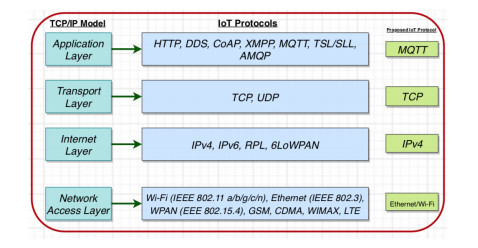
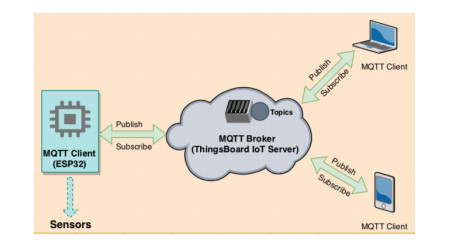
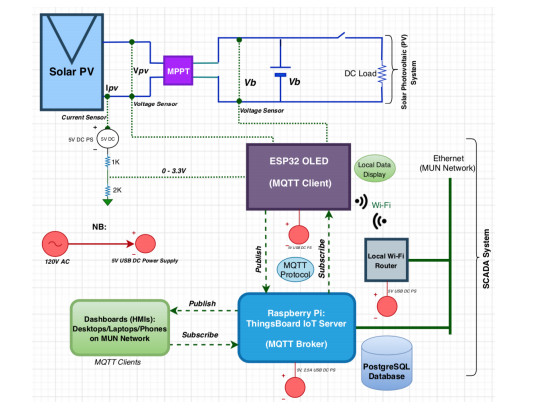
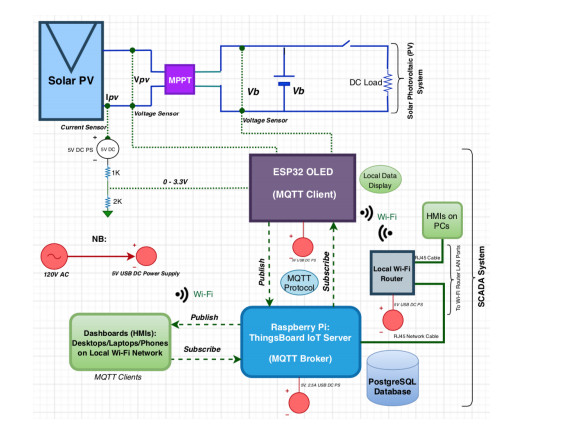
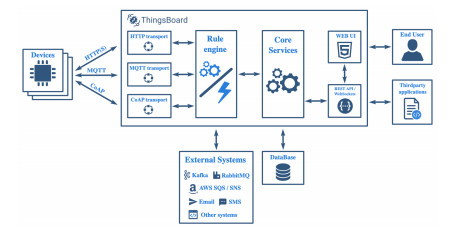




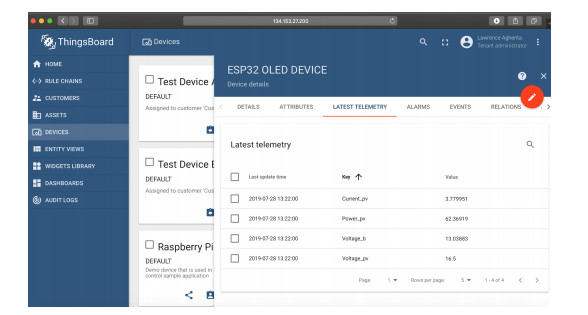
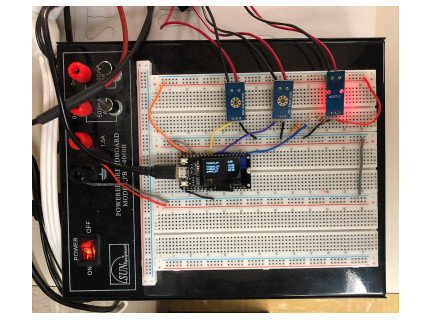
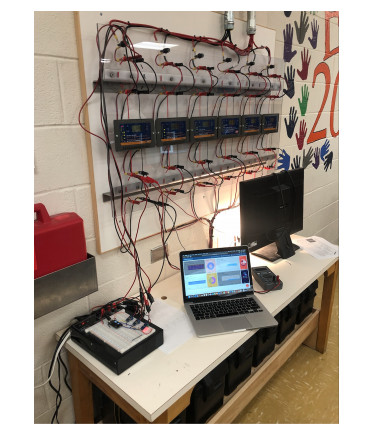
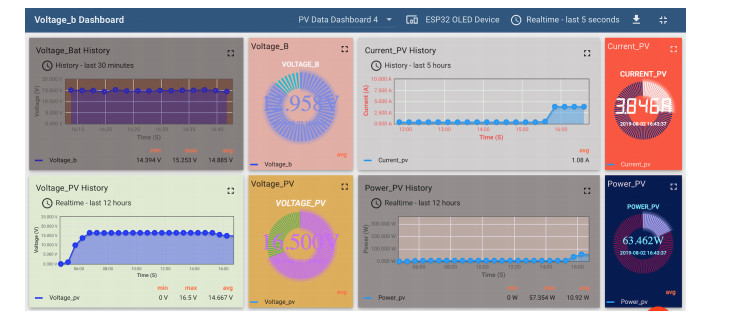
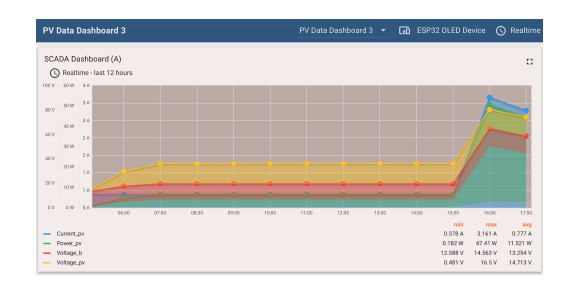
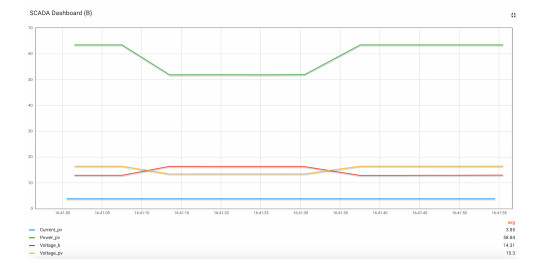
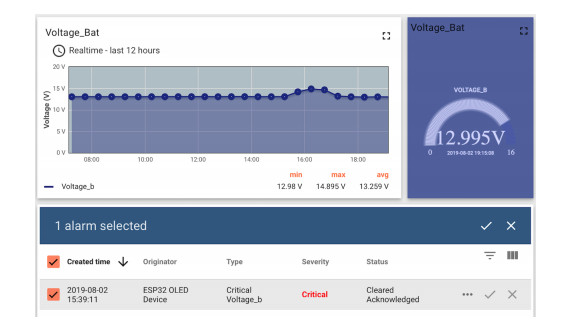


 DownLoad:
DownLoad: